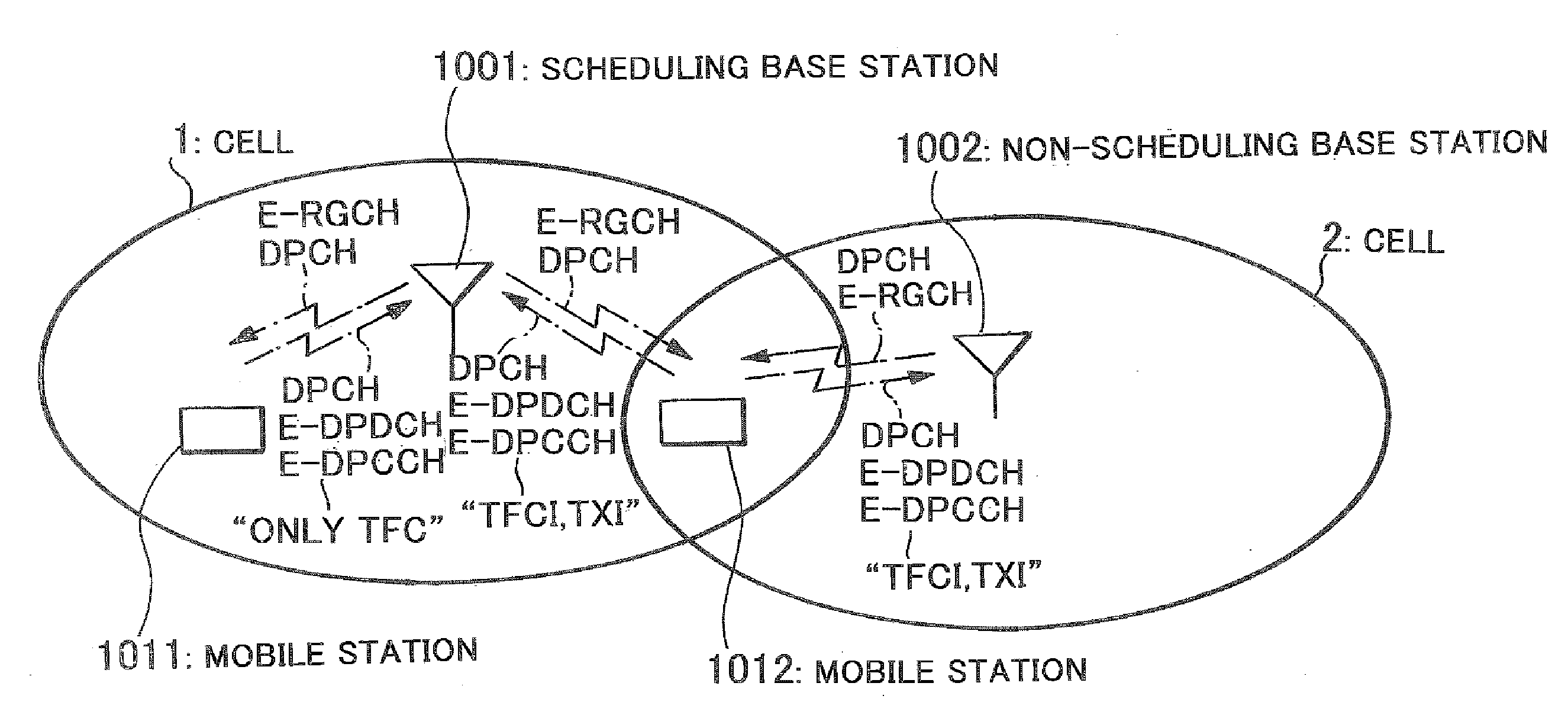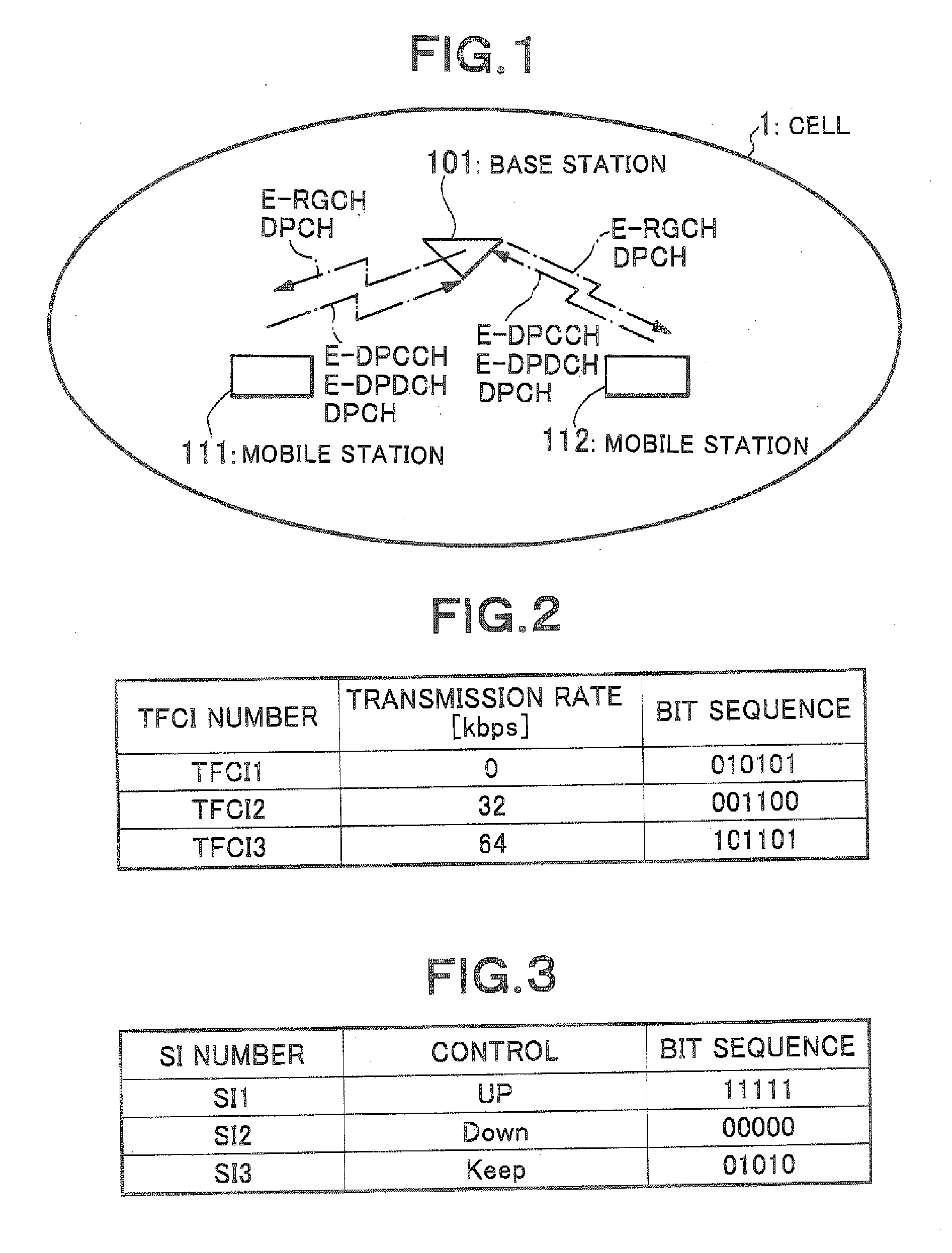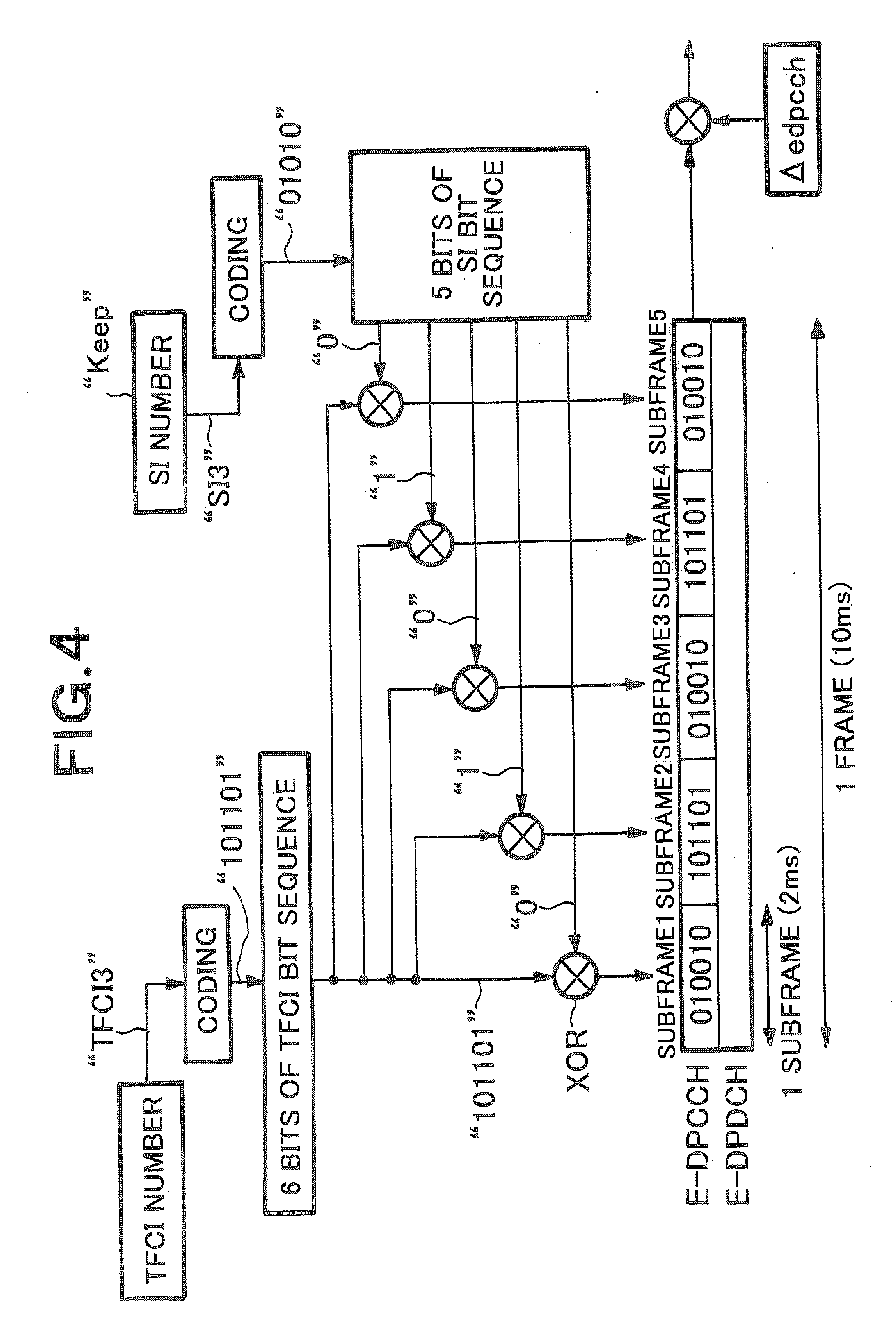Code sequence transmission method, wireless communication system, transmitter, and receiver
a transmission method and wireless communication technology, applied in multiplex communication, power management, high-level techniques, etc., can solve the problems of inability to use remaining power on data channels, inconvenient use, and inconvenient use, so as to improve system throughput and user throughput, improve power utilization efficiency, and improve system throughput
- Summary
- Abstract
- Description
- Claims
- Application Information
AI Technical Summary
Benefits of technology
Problems solved by technology
Method used
Image
Examples
first embodiment
[0062]FIG. 1 is a block diagram of a wireless communication system according to a first embodiment of the present invention. In FIG. 1, the wireless communication system according to the first embodiment of the present invention includes a base station 101 provided in a cell 1, and mobile stations 111 and 112 connected to the base station 101. The following channels are configured between this base station 101 and the respective mobile stations 111 and 112, and data is transmitted on uplink (in a direction from the mobile stations 111 and 112 to the base station 101).
[0063]Referring to FIG. 1, E-DPCCH is an uplink channel for transmitting a control signal on an EUDCH, and. E-DPDCH (E-DCH Dedicated Physical Data Channel) is an uplink channel for transmitting data on the EUDCH. In addition, E-RGCH (EDCH Relative Grant Channel) is a channel on downlink (in a direction from the base station 101 to the mobile stations 111 and 112) for transmitting the control signal on the EUDCH, and DPC...
second embodiment
[0094]FIG. 8 is a block diagram of a wireless communication system according to a second embodiment of the present invention. Referring to FIG. 8, the wireless communication system according to the second embodiment of the present invention includes a base station 1001 provided in the cell 1, mobile stations 1011 and 1012 connected to the base station 1001, a base station 1002 provided in a cell 2, and the mobile stations 1012 connected to the base station 1002. Namely, the mobile station 1012 present near a boundary between the cells 1 and 2 establish radio links to the two base stations 1001 and 1002, respectively. Only the base station 1001 out of the base stations 1001 and 1002 (Active Set base stations, “AS base stations”) for which the respective radio links are established performs scheduling, and the other AS base station 1002 does not perform scheduling. Since channels set among the base stations 1001 and 1002 and the mobile stations 1011 and 1012 are the same as those acco...
PUM
 Login to View More
Login to View More Abstract
Description
Claims
Application Information
 Login to View More
Login to View More - R&D
- Intellectual Property
- Life Sciences
- Materials
- Tech Scout
- Unparalleled Data Quality
- Higher Quality Content
- 60% Fewer Hallucinations
Browse by: Latest US Patents, China's latest patents, Technical Efficacy Thesaurus, Application Domain, Technology Topic, Popular Technical Reports.
© 2025 PatSnap. All rights reserved.Legal|Privacy policy|Modern Slavery Act Transparency Statement|Sitemap|About US| Contact US: help@patsnap.com



